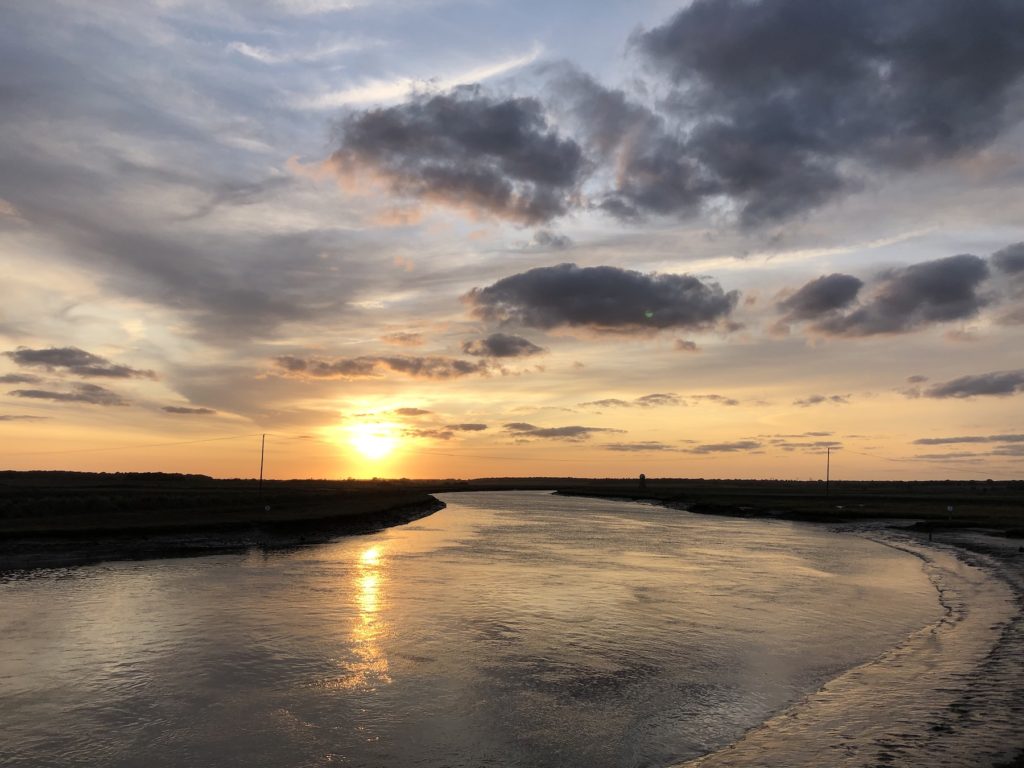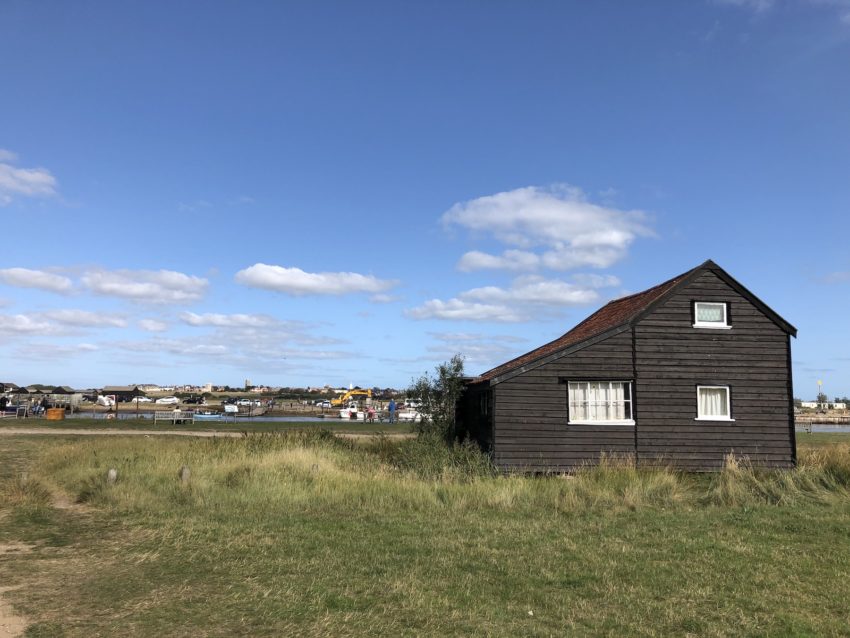We didn’t spot a single celebrity in the pretty Suffolk village of Walberswick, which must be a record judging by the number who allegedly live there. Why they’ve chosen to set up home in this corner of East Anglia is pretty obvious.
A stone’s throw from the more popular seaside town of Southwold across the River Blyth, Walberswick is a straggling village of characterful buildings, thatched cottages, upmarket shops and handsome pubs. It’s quiet and genteel, largely free of traffic because it’s at the end of the road. Down by the harbour are a collection of old fishermen’s shacks, some of which have been converted into smart holiday homes.
It was the second stop on our coronavirus-era staycation in Suffolk and Norfolk, and we weren’t the only ones paying a visit. The pubs were full and holidaymakers travelled in from neighbouring towns and villages for a day exploring in significant but not uncomfortable numbers.

Walberswick may be relatively quiet today but it was once a significant trading port. The now-modest church of St Andrew hints at the wealth and power that once washed around the village, for surrounding it are the walls of an older and much larger church, and the giant tower is out of all proportion to the remaining building. We were staying near the river foot ferry crossing in a comfortable apartment, just yards from the harbour and the pebbly beach. Here crabbers went about their business and a few braved the September breezes off the North Sea.
Walberswick may be a popular holiday spot but it felt chilled, as far removed from our manic capital city as it’s possible to be. It’s a village that helped us recharge and wind down. Dunwich, which lies to the south, is similar but was once one of the most important ports and towns in England. As any visitor to East Anglia knows, the coast in this part of the world can be wild and is prone to erosion and so, over the centuries, much of Dunwich was consumed by the sea and little now remains. We walked there on a glorious September day, following the easy trail through wetlands, marshes and waves of reeds, past a derelict windmill and on to the woodlands and pastures around Dunwich.

We entered the village near St James’s Church, where there are remains of an old leper chapel from the time when this was outside the once thriving town. A few yards down the road is the small but excellent Dunwich Museum, which tells the fascinating story of the settlement and features a model of the town at its height. It’s incredible to think that beyond the beach and under the North Sea lie the ruins of many churches, commercial buildings and homes that once made up such a trading powerhouse. We stopped for lunch at The Ship pub and wandered up to one of the few remaining ruins in Dunwich, the 13th century Greyfriars Franciscan priory. Just a part of the gatehouse and refectory remain but this was clearly a big and important site.

We wandered down to the beach and began the walk back to Walberswick along the coast, looking for shells amid the hardy vegetation that somehow thrives among the shingle and salty storms. The breeze kept the heat at bay.
The walk to Southwold on another day also took us through marsh and wetlands, but in summer these are grazed by cattle and year-round are an important bird sanctuary. Flocks of geese came and went and twitchers clung to their binoculars. Much of the walk, which avoided the short-cut on the ferry, was atop the sea defences designed to protect settlements in this part of the world from the kind of storms and flooding that in 1953 caused havoc and many deaths up and down eastern England. Reminders of just how high the tide was in that year are nailed to many of the charming black buildings that line the River Blyth and which together go by the name of Southwold Harbour. This is a thriving spot, with boat builders, fishing vessels and moorings. There are several fish and chip shops and we stopped at one for a pint and plateful when we were out one lunchtime.

Southwold itself is a much busier place than Walberswick but it’s avoided becoming a tacky stuck-in-the past hellhole full of amusement arcades, like so many of our seaside resorts. Its centre is full of charm and character and it’s clearly a wealthy and popular town, even in the age of coronavirus and social distancing. Midweek, late in September, it was difficult to find a place to have lunch but we eventually grabbed a table in an Adnams pub. The historic brewery dominates the town centre but although an important and industrial employer, the buildings largely blend in surprisingly well. We went for a guided tour but because of the virus weren’t allowed to go into any of the buildings while the brewers were at work. Instead we made do with an extended tasting session, which involved many of Adnams’ excellent beers, and that suited me perfectly. Followed by a visit to their shop and a walk home across the marshes accompanied by a glorious sunset, it made for a great afternoon.

Adnams beers were served in quantity in Walberswick’s pubs, The Bell Inn and The Anchor. We ate at the latter several times too, and very good the food was too.

